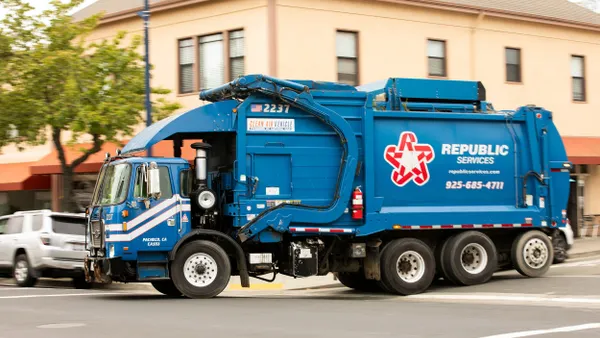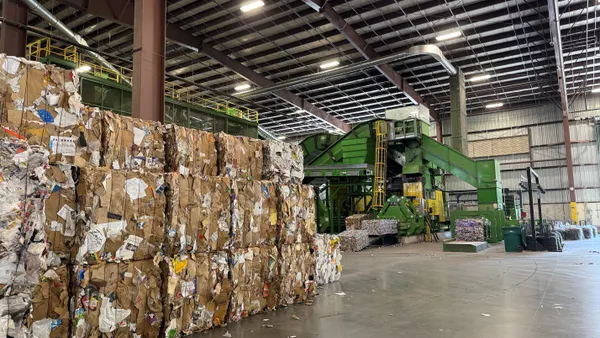Dive Brief:
- The U.S. Bureau of Labor Statistics released its 2014 Workplace Injury and Illness Data, highlighting an increase in total recordable workplace injury and illness cases in the waste and remediation sector. The total recordable cases of workplace injury and illness in the industry was 5.1 per 100, an increase from the 2013 rate of 4.7 per 100.
- In the solid waste collection subcategory, the total rate of recordable cases was 7.1 per 100, up from the 2013 rate of 6.4 per 100.
- Nationally, the report indicates a downward trend of incidence rates across all industries, with the total recordable cases for private industry falling to 3.2 per 100 full time workers in 2014 from 3.3 in 2013.
Dive Insight:
The BLS report for the waste industry is concerning, as the injury and illness rate among solid waste collection employees jumped 7%. This is the highest rate for this category since 2008, according to SWANA CEO David Biderman.
"The increase in the injury rate for collection employees to levels not seen since 2008 is alarming, and the high injury rate for employees at recycling facilities remains a concern. Too many workers are getting hurt, despite the increased attention being paid to safety by some employers and the ongoing introduction of new safety-related equipment and programs," said Biderman in a press release. "SWANA will continue to expand the safety resources it makes available to the industry to help reduce injuries and get the waste collection industry off the federal government’s list of 10 most dangerous jobs. Nothing we do is more important."
The National Waste & Recycling Association also expressed concern regarding the report, stating that the data reaffirms the industry's growing commitment to safety.
"The private sector waste and recycling industry has been working together, across competitive lines and in the common interest, to take a holistic approach to addressing workplace safety," said NWRA President and CEO Sharon Kneiss in a press release. "Tragically, our industry continues to be subject to the deadly consequences of distracted driving where inattentive motorists are causing a hazard to employees in our industry, and more must be done to address public awareness and safe driving generally on our highways."
Kneiss noted multiple safety initiatives that are being taken by NWRA and other organizations, including the "Slow Down to Get Around" program and various safety training programs.











